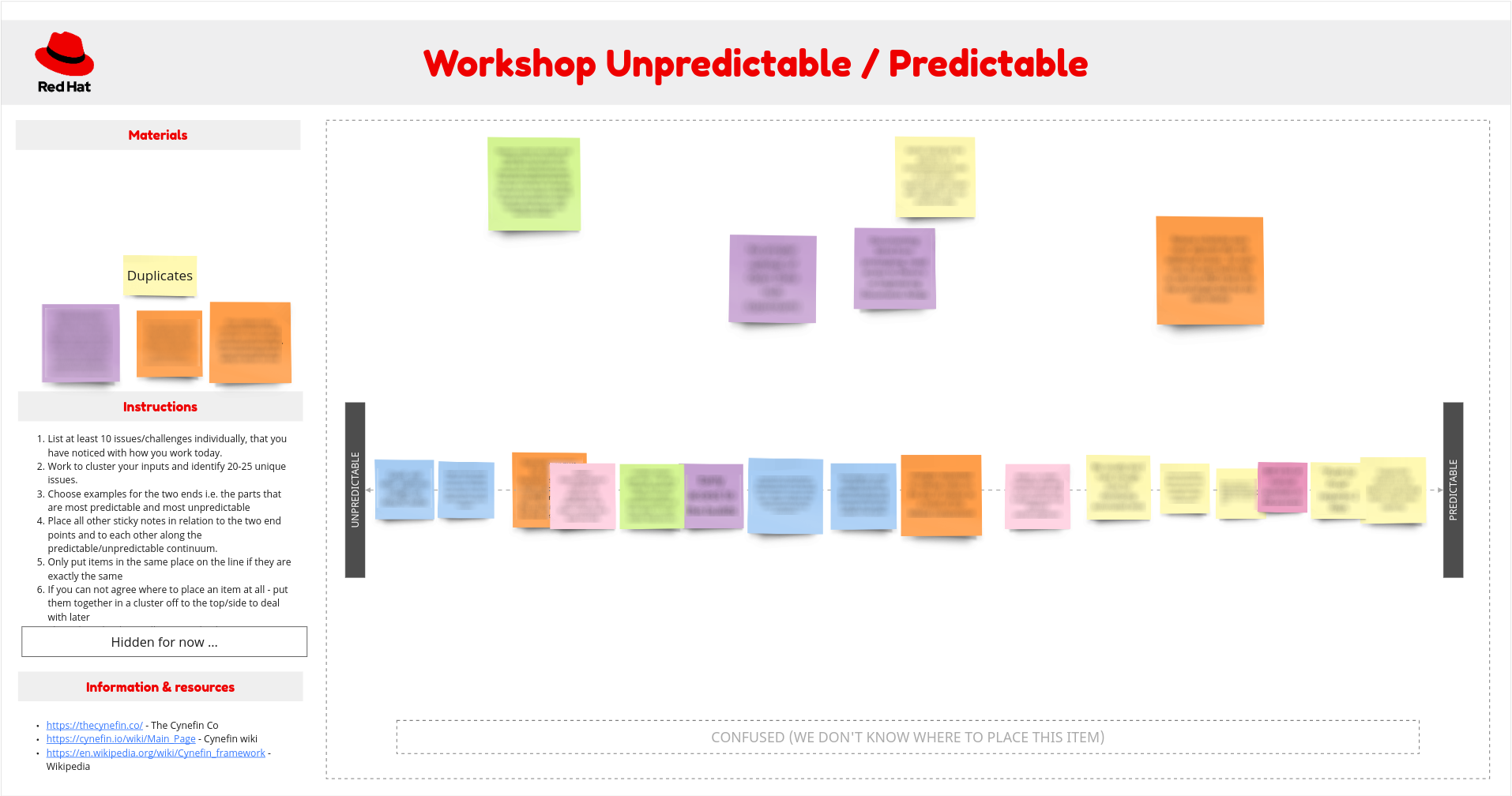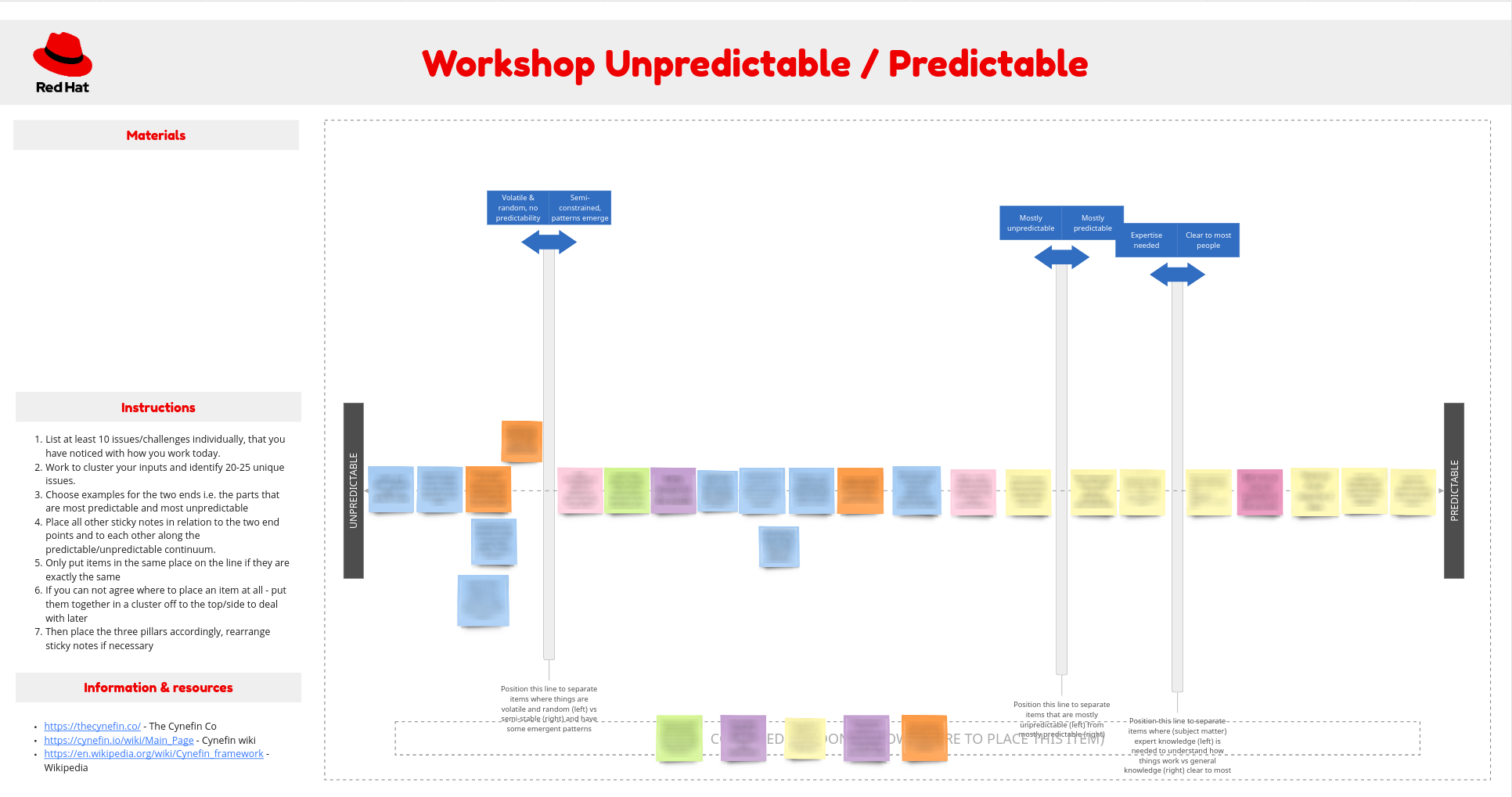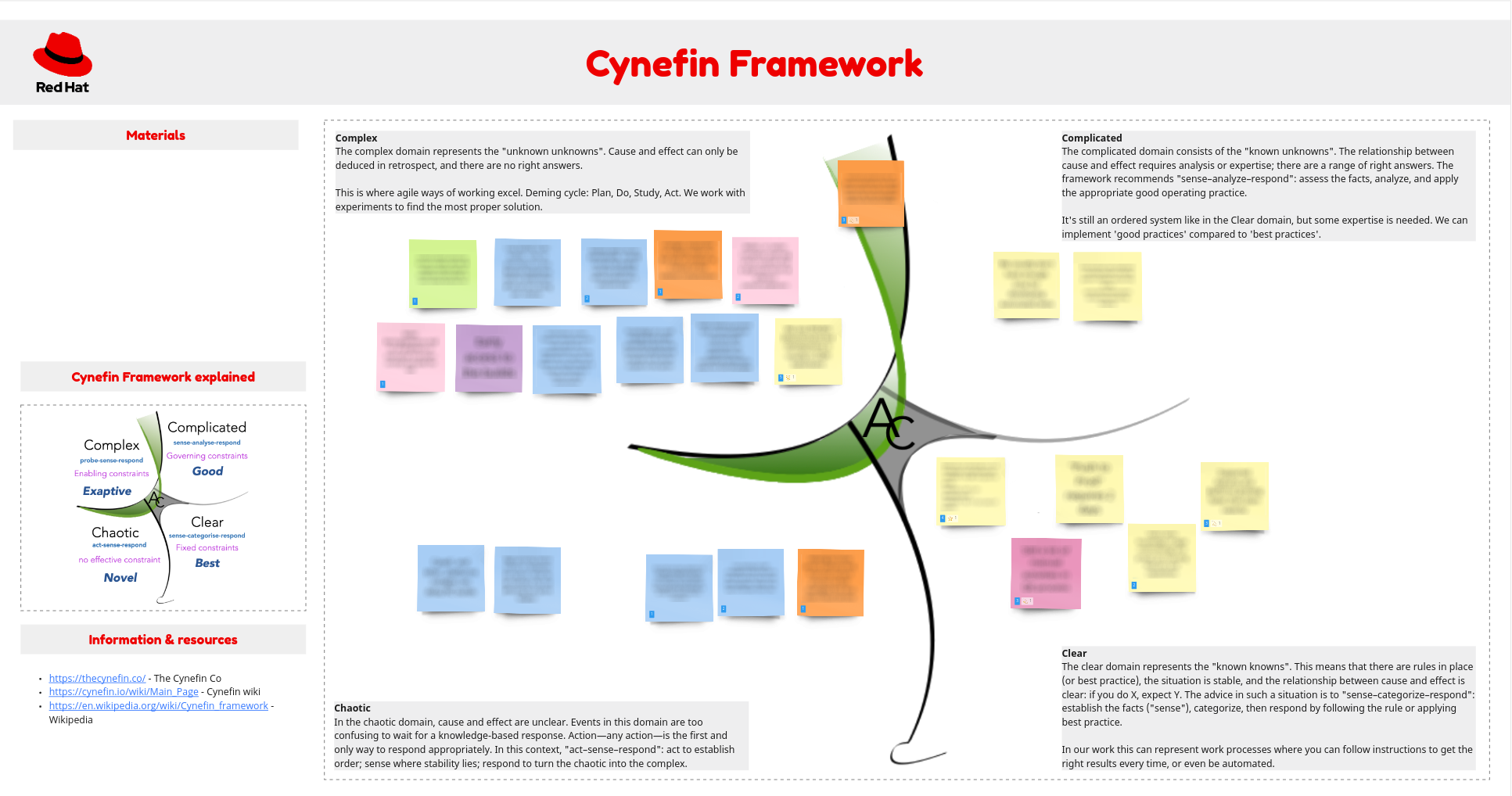Using the Cynefin Framework to help with continuous improvement
I previously wrote about an example where I used the Cynefin Framework for process improvement. This post will cover a workshop format I learned at the Cynefin Basecamp, working with a team and their continuous improvement journey.
The workshop contains of three phases and due to time constraints and time zones we had to divide the phases into two live sessions and parts done asynchronously. The team was spread out between the US, Europe, and India. So I set up phase 1 and 2 with two sessions in US and Europe/India friendly times separately. The next phase was done asynchronously, working in Miro boards and chat channels.
In preparation for the first session, I asked the group, a subset of the team, to write down 10 issues and/or challenges with how they work today. I asked them not think about solutions or how they would like it to be, just state the challenges as is and we’ll tackle them together later on. I was deliberately a bit vague on the content of the workshop, I wanted them to lean into the unknown for a while and keep away from problem solving too early.
Ideally we would have the whole team in the workshop at the same time, but we did what we could. The participants in the first session listed their individual 10 issues, discussed and clustered where appropriate, and then tried to find representative issues for the two ends of the scale Unpredictable to Predictable. Once agreed, they could continue to map out the remaining sticky notes on the line, discussing them, and making sure no two sticky notes were on the same spot. There were a few leftovers the group didn’t have time for when the session ended.

The next session featured another group of the team. In order to save time, we started that session with the group reviewing the results from their colleagues. They could add topics they felt were missing, rearrange if they disagreed with the order of sticky notes, and then arrange the leftovers and the new sticky notes to the same line. There were five sticky notes left in the Confused area below the Unpredictable/Predictable line.

Next I revealed the three pillars (from left to right):
- Volatile & random, no predictability / Semi-constrained, patterns emerge. Instructions: Position this line to separate items where things are volatile and random (left) vs semi-stable (right) and have some emergent patterns.
- Mostly unpredictable / Mostly predictable. Instructions: Position this line to separate items that are mostly unpredictable (left) from mostly predictable (right).
- Expertise needed / Clear to most people. Instructions: Position this line to separate items where (subject matter) expert knowledge (left) is needed to understand how things work vs general knowledge (right) clear to most.
The group now had to position the three lines/pillars accordingly, moving some sticky notes if necessary. Great discussions emerged from this exercise and I was happy both groups managed to stay away from starting to try to solve the problems and just focusing on identifying and ordering them.
For the next steps we moved into asynchronous work. Based on the order and where the sticky notes were placed between the three pillars, I transferred them to a Cynefin Framework board.

Describing the different domains in the Cynefin Framework, the entire team now had a discussion whether the sticky notes still were in the right domain. Some sticky notes were moved, but all in all the previous steps had arranged them pretty well. We then went into a dot voting session where each team member got 5 votes to put on the issues they felt were the most pressing. You could spread them out or put all votes on one issue. The result got us an indication of which items we should tackle first. There was a clear winner and we also identified the top-5 issues. It was interesting to see that these fives issues were spread out between the Complex, Complicated, and Clear domains. We discussed the top issues in each domain and what would be a good way to address those issues. Still no problem solving at this stage, but more a discussion that for the issues in the Clear domain, are there any best practices we can use? Are there something that could be automated to free up time for the more complicated and complex issues? In the Complicated domain, who would be the expert/s to start tackling these issues? And last but not least, in the Complex domain, what are some safe to fail experiments we can run to see what might the best solutions for us?
In the end, these issues could feed into the team continuous improvement backlog and the top 5 already being identified and ordered. Important for what happens next is to dedicate time to handle the issues, otherwise the preparation time have just been a waste of time and the items end up in a backlog never to be looked at again. Let’s make sure that doesn’t happen!
The instructions (revealed one step at a time) for the workshop/s:
- List at least 10 issues/challenges individually, that you have noticed with how you work today.
- Work to cluster your inputs and identify 20-25 unique issues.
- Choose examples for the two ends i.e. the parts that are most predictable and most unpredictable.
- Place all other sticky notes in relation to the two end points and to each other along the predictable/unpredictable continuum.
- Only put items in the same place on the line if they are exactly the same.
- If you can not agree where to place an item at all - put them together in a cluster off to the top/side to deal with later.
- Then place the three pillars accordingly, rearrange sticky notes if necessary.